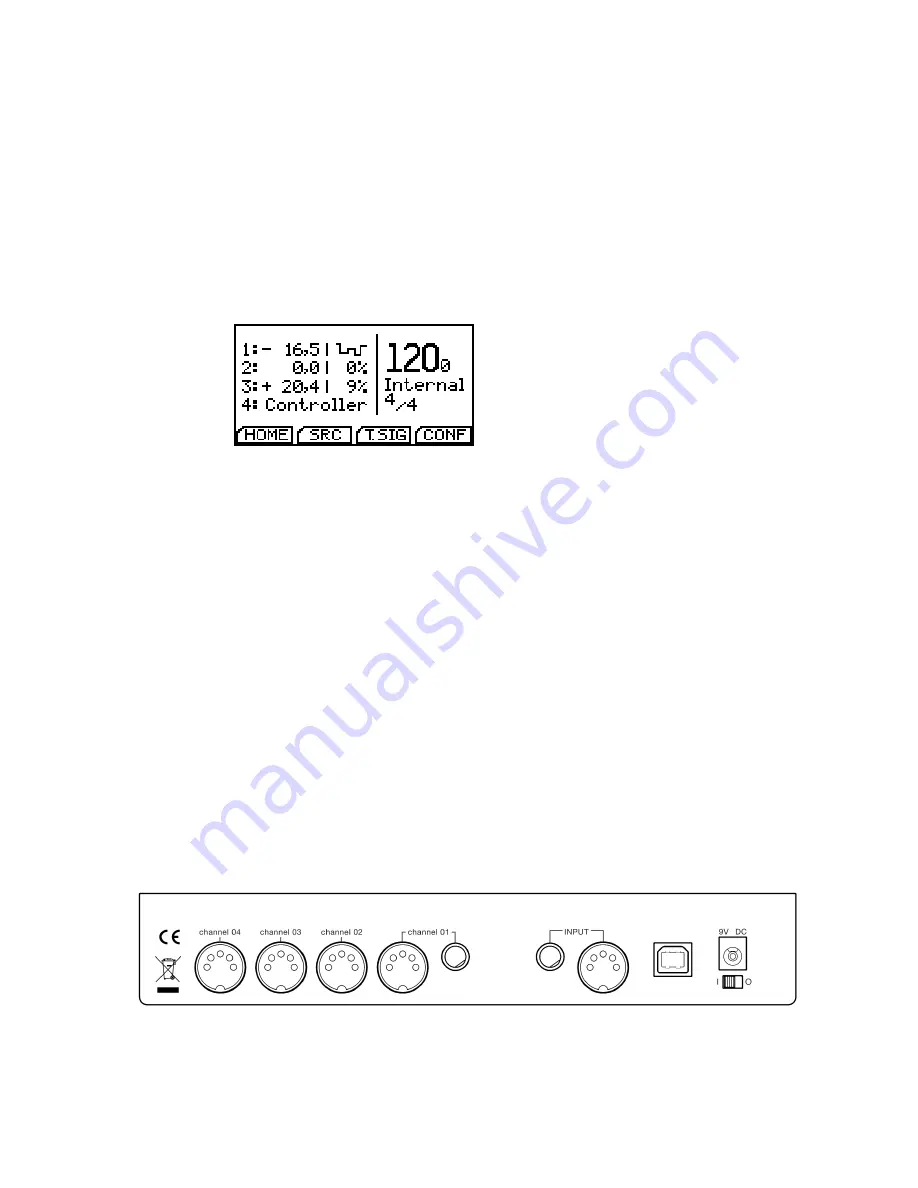
m a c h i n e ove r v i e w
9
You see the clock source, time signature and current BPM on the
right part of the screen.
On the left part is one line for each output channel to display
shift offset, shuffle amount or additional information like channel
mode and LFO waveform.
On the bottom of the screen is a virtual button section which
allows you to change the global machine configuration. Use the
se-
lect menu
button to toggle the cursor between the virtual buttons
and the upper main part of the screen.
Example Homescreen.
Notice the
different Channel Modes shown here:
Channel 1 is configured as LFO, Channel
2+3 work in sync mode and Channel 4 is
used as a MIDI controller.
The rear panel of the
multiclock
provides
connectivity
and input
for the power supply. It can also be divided into two sections:
inputs on one side, outputs on the other. DC input and a power
switch are located on the rightmost edge.
Syncronisation inputs are available in the form of a ¼” jack for
Audio Sync and a DIN socket for MIDI, sync24 and analog modular
Modular Synth connectivity is eas-
ily accomplished by using a E-RM
modular whip
to convert from all DIN
sockets to 2 mini jacks for clock & run
signals.
sync. Audio Sync can be fed as a balanced or unbalanced signal but
is internally treated unbalanced in both cases.
On the left, there is one DIN socket for each output. Any of them
can provide MIDI, sync24 and analog modular sync, depending on
the channel settings in the menu.
Channel 1 additionally has a ¼” TRS output jack to provide ana-
log clock or analog LFO.
Tip = Clock/LFO, Ring = Start
Channel settings can be reached by holding the
set channel
button and pressing the button of the respective channel.
multiclock
connector overview.
Содержание Multiclock
Страница 1: ...USER MANUA L E RM ER FI ND U N GSBÜRO ...
Страница 4: ...Simply play together ...
Страница 6: ......
Страница 28: ......










































